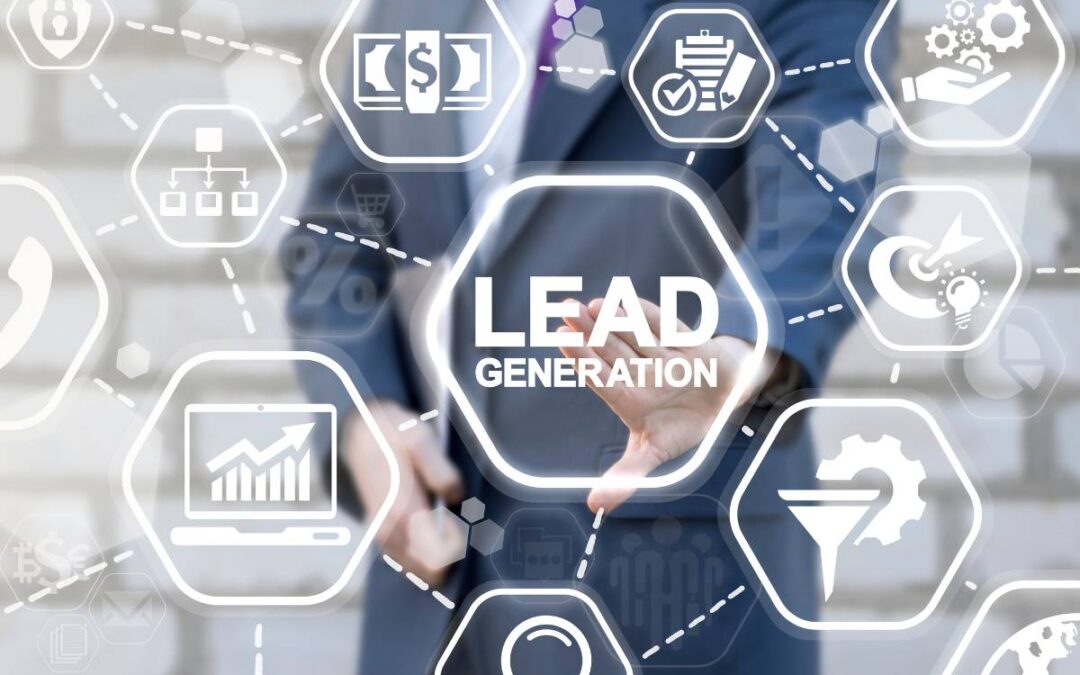For as long as there’s been marketing, there’s been a marketing funnel. A visual representation of the customer journey, a marketing funnel maps each stage of the sales process, from lead to prospect, to buyer. However, as traditional marketing has evolved into digital marketing and customer behavior has become increasingly reliant on digital channels, traditional sales funnels have pivoted to inbound marketing funnels.
Inbound marketing funnels harness high-value content designed to address the needs of a modern buyer to lure prospects deeper into the sales funnel. As an integral part of a digital marketing strategy, the priority level of an inbound marketing funnel has grown exponentially year-over-year since 2015. More than 48% of companies cite improving the efficiency of their sales funnel as their primary objective for the next year, second only to closing more deals.
If you want your digital marketing strategy to succeed, it’s time to learn how to create an inbound marketing funnel that actually works. First, take a look at why some marketing funnels fail, how to build an effective inbound marketing funnel, and how to transition from marketing to sales.
5 Reasons Why Inbound Marketing Funnels Fail
Inbound marketing focuses on attracting prospects with relevant and educational content that’s highly personalized to the consumer. An inbound marketing funnel specifically devises content for the type of buyer and where they are in the consumer journey — whether in the initial awareness stage or deeper into the consideration phase. This content then draws the ideal customer to your website, where your team can seal the deal.
Unfortunately, while inbound marketing heavily relies on an effective content marketing strategy, many moving parts influence a buyer’s ultimate decision. With a digital marketplace and social platforms at a consumer’s fingertips, sales teams have lost control over how, when, and where prospects enter the funnel. Consider these reasons as to why inbound marketing funnels fail.
1. The Marketing Funnel is Too Complicated
Whether you’re establishing a B2B or B2C marketing funnel, the concept remains the same: Do not complicate things. The beauty of inbound marketing funnel stages is the ability to meet buyers where they’re at in the customer journey with targeted information. If you begin creating an overly complicated sales funnel with too many variables or unfocused goals, you’ll never be able to provide buyers with precisely what they need to convert.
Ideally, the quicker a buyer can see what you’re offering, how it can benefit them, and what steps to take next, the easier it will be to move them through the sales funnel. Without this information immediately available, your complicated buyer’s journey may cost qualified leads. So, streamline each stage of the funnel. Provide one or two steps in each area of the funnel — for instance, in the awareness stage, focus on attracting on Facebook or through Instagram. This way, you can easily collect data or tweak the process in meaningful ways.
2. The Funnel Doesn’t Account for External Influences
Even with an airtight digital marketing strategy, various external influences can impact your inbound marketing funnel stages. With access to all major retailers, review platforms, and social media sites at the touch of a button, today’s consumer is inundated with options far beyond what you’re selling.
External influences that have a large impact on inbound marketing funnels include:
- Access to competitors — With businesses big and small operating on the same online platforms, there’s more competition between brands. In terms of e-commerce, this means that consumers can use anything from available coupon codes to expedited checkout processes to weigh your product against a competitor’s.
- Algorithm updates — Even with a host of paid advertisements, organic algorithm updates across search engines and social media sites can limit how much a buyer interacts with your brand.
- Social influence — From Google My Business to Yelp, online reviews and word-of-mouth referrals can strongly influence a buyer’s journey.
3. The Content Doesn’t Attract the Right Leads
Even with all the inbound marketing in the world, you cannot increase conversions if your content doesn’t attract your target audience. Most commonly, content doesn’t match a buyer or a buyer’s journey because the marketing team didn’t complete a buyer persona or identify who the ideal consumer would be. If your content doesn’t attract the right leads, buyers will never make it past the awareness stage.
For instance, consider a software company targeting leads for its newest design program. These campaigns can run in the hundreds to thousands of dollars monthly. The company creates striking digital marketing assets, but they capture the attention of design students, not professional designers. Now the company has leads, but since the leads likely can’t afford the product, all of the leads turn cold.
4. Poorly Constructed Landing Pages
Another culprit of failed full marketing funnels is poorly constructed landing pages. Landing pages are often standalone pages specifically designed for an inbound marketing campaign or specific marketing funnel stages. As a crucial part of a content marketing strategy, landing pages should be clear, concise, and enticing to the consumer. Poorly constructed or inadequately designed landing pages can immediately lead to precious leads not converting. More often than not, once they’re gone, they’re gone for good. These leads must convert at the first opportunity you have to capture them.
Examples of poorly constructed landing pages include:
- Limited information about the product or service
- No specific call-to-action (CTA)
- Extensive amounts of jargon
- Text that is difficult to read
- Incredibly slow loading time
- Poor mobile experience
5. Insufficient Lead Nurturing
With regard to inbound marketing leads, few results are worse than generating a ton of brand awareness, just to let leads dry up due to slow responses. Even an otherwise successful inbound marketing funnel can prove ineffective if the sales or marketing team fails to nurture leads towards conversion. Remember, convenience is key in today’s marketplace, and consumers expect to hear from you should they require any information throughout their buyer’s journey.
When it comes to inbound marketing, time is of the essence:
- 5 minutes after form submission, a rep has exceptionally high chances of connecting with a new lead
- After 30 minutes, the rep is 100 times less likely to make contact
- After 5 hours, the rep is 3000 times less likely to make contact
The lesson here? Don’t let leads grow cold, or they can tank an otherwise successful sales funnel.

How to Build an Effective Inbound Marketing Funnel in 4 Steps
Now that you’re familiar with why inbound marketing funnels fail, it’s time to learn how to build campaigns that succeed. While your inbound marketing will encompass content, email, and social media marketing, four main elements will help your strategy shine. The four elements necessary to build an effective inbound marketing funnel include knowing your target audience, creating a great landing page, generating traffic, and perfecting an email drip campaign.
1. Know Your Target Audience
Before you can conceptualize a buyer’s journey, you need to establish a buyer persona. A buyer persona is a fictional representation of your ideal customers based on research and data. As you create your buyer persona, you should consider which aspects of your digital marketing strategy have performed well in the past and which channels would be best to connect with a potential customer.
Ideally, your buyer persona should include a potential customer’s:
- Interests
- Demographics
- Behavioral traits
- Buying patterns
- Pain points
- Goals
With these persona details in mind, you can draft content that specifically speaks to your target audience. Your inbound marketing can directly reflect their pain points and goals and how your business can address those. Plus, by knowing how your target audience typically shops and where they gather, you can make content that’s both attractive and educational as well as attracts the right leads right off the bat.
2. Spend the Time to Build a Great Landing Page
After reviewing the elements of a poorly constructed landing page, such as non-specific call-to-action or limited information about the advertised product or services, let’s look at
building a great landing page to help steer a customer in the right direction. With a better understanding of your target audience and where a lead is in the digital marketing funnel, you can craft a landing page that turns a potential customer into a recurring customer.
Elements of a high-performing landing page include:
- Precise product details and imagery
- Information about how the product can solve consumer pain points
- Simple sentences that are free of industry jargon or tech speak
- Legible font and text choices for ease of accessibility
- Fast loading speed and mobile experience
- An interface that’s easy to navigate
As soon as a lead enters a landing page, the value proposition should be immediately above the fold — the space visible without needing to scroll. The page should instantly describe the value proposition for the product and let your customers know that you understand their pain points. Similarly, there should be a simple, recognizable CTA for potential customers to take next. Whether it’s an email capture form or an online demo, your CTA should bring leads deeper into the funnel.
3. Generate Traffic to Your Funnel
The key to turning your sales funnel into a conversion funnel is by driving traffic straight to it. Fortunately, that’s where the host of marketing channels in your inbound strategy come into play. From leveraging the content on your website to generating engagement on your social media pages, there are many ways to herd the modern customer into your inbound marketing funnel.
Cost-effective methods to generate traffic to your funnel include:
- Promote your blog posts across social media
- Optimize your social snippets with images and related text
- Personalize content to the buyer and their stage of the consumer journey
- Run targeted ads that harp on your consumer’s main pain points
- Leverage social influence with testimonials or reviews
- Craft eye-catching headlines or email subject lines
- Offer a lead magnet to capture email addresses
- Generate a weekly or monthly newsletter
- Create social media groups
An email drip campaign completes the cycle by driving repeat visits from leads that may have grown cold.
4. Perfect an Email Drip Campaign
An email drip campaign, also referred to as drip marketing, lifecycle emails, or an automated email campaign, is a set of marketing emails that are sent automatically. For instance, a welcome email is sent as soon as someone signs up for your newsletter or joins your mailing list. The follow-up email is sent three days later, with an additional follow-up email in one week. This way, your brand remains front-and-center in a user’s inbox to entice them deeper into the funnel.
Alternatively, a drip campaign can be scheduled based on triggers. For example, common email triggers for e-commerce businesses include when a customer purchases or abandons their cart. In these cases, an email can be sent within 24 hours to either thank the user for their purchase or prompt them to checkout. When using triggers such as these for an email drip campaign, there are multiple opportunities to generate traffic to your funnel and remain in the forefront for when a user is ready to make a purchase.
You’ve Built an Awesome Marketing Funnel — What Now?
Even with new best practices top of mind and a freshly built inbound marketing funnel, you’re not finished. Once your sales funnel is complete, the rest of your marketing strategy should focus on seamlessly transitioning from marketing to sales and optimizing your progress as you go.
Create a Seamless Transition from Marketing to Sales
As we mentioned before, the chances of a lead growing dry increase exponentially after just one hour. So, it’s key to create a seamless transition from marketing to sales to nurture a prospective customer to conversion. No matter the size of your marketing team, there are several ways to communicate with a lead instantly.
Ways to make the transition from marketing to sales seamless include:
- Implement a chatbot to initiate the first point of contact
- Create a self-service help library to help guide potential customers to what they need
- Utilize message monitoring to establish automated responses to frequently asked questions
- Offer an instant demo or sales call upon form submission
- Send an automated welcome letter or thank you note

Measure Your Funnel and Optimize
Like other inbound marketing strategies, the continuous success of your marketing campaign will rely on constant measuring, analyzing, and optimization. Several key performance indicators (KPIs) your marketing team should focus on to be successful in the long-term and generate a high conversion rate.
KPIs to monitor and optimize for inbound marketing funnels include:
- New users
- Organic clicks
- Website sessions
- Impressions
- Repeat visitors
- Branded search volume
- Time for response
- Number of emails logged
- Marketing Qualified Leads (MQL)
- Total sales
- Stage progression rate
- Retention rate
An Inbound Marketing Funnel That Works With You, Not Against You
Over the years, sales funnels have become intertwined with digital marketing so that an inbound marketing funnel with high-performing content is the only way to efficiently modern target consumers. Yet despite their importance, a lack of direction, poor landing pages, and insufficient lead nurturing cause many inbound marketing funnels to fail. If this sounds familiar to you, it might be time to get a qualified digital marketing agency on board.
A digital marketing agency like Bullseye Strategy acts as a natural extension of your marketing team to drive conversion funnels. We’ll help create an inbound marketing funnel that works with you, not against you, so you can begin connecting and closing qualified leads sooner rather than later. Contact Bullseye Strategy today to learn more about how we can help you craft a high-performing sales funnel.







